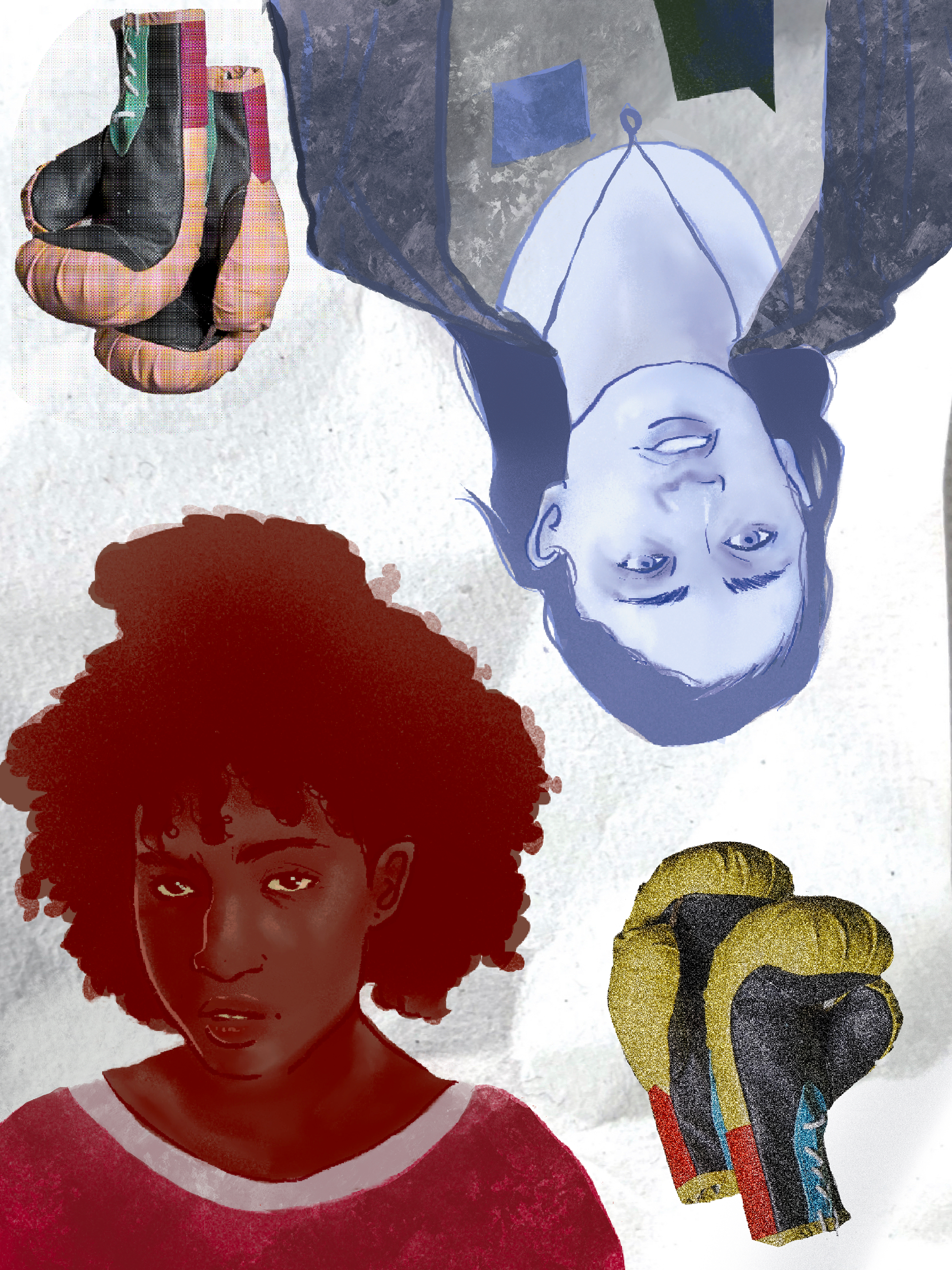“Bottoms” is for the Girlfailures.
By Olivia Ring
November 9, 2023

Graphic by Deniz Limon
Imagine a fight club. Not one like Fincher’s, but one run by two lesbians with the sole intention of hooking up with hot girls. This is the premise for the comedy “Bottoms,” written and directed by Emma Seligman.
“Bottoms” is about two lesbians, Josie (Ayo Edebiri) and PJ (Rachel Sennott), who are described, both by themselves and by the other characters in the movie, as “ugly, untalented gays.” As a queer person who spent most of high school feeling chronically uncool, “Bottoms” felt like my “Joker.” These girls are losers. I was (and probably still am) definitely a loser, too. I’ve never seen myself in the hot, confident, chic women on screen, no matter how much I wish I could. Instead, I feel seen by the women like our protagonists in “Bottoms” — deeply flawed and unserious women who have seemingly never felt calm, collected, or cool in their lives.
Unsurprisingly, “Bottoms” had initially received criticism for having main characters that are too unlikeable — diluting their personalities and development to “annoying” and “obnoxious.” Because, of course, women in media have to hit a certain threshold of likability in order to be deemed acceptable by mainstream audiences.
We love movies about men that suck. The men in “The Godfather?” Not good people. Mark Zuckerberg? A bad person, which “The Social Network” tells us upfront. We know going in that not every character in the media we consume is going to be perfect, and that’s a good thing. But until recently, this wasn’t the case for female characters.
We beg for more complex, real depictions of people, but it seems as if audiences have trouble stomaching flawed characters, particularly women, when they see them on their screens. In a world where audiences love and acclaim the Walter Whites and Don Drapers, they despise the Skylers and the Bettys.
Complicated female characters are, more often than not, hated by their fandoms to a much larger extent than their male counterparts. In an Op-Ed for the New York Times, “Breaking Bad” actress Anna Gunn writes about the visceral hatred she received for playing the character Skyler White, the spouse of the show’s protagonist. In the piece Gunn writes, “I finally realized that most people’s hatred of Skyler had… a lot to do with their own perception of women and wives. Because Skyler didn’t conform to a comfortable ideal of the archetypical female, she had become… a measure of our attitudes toward gender.”
I’ve had conversations with (predominantly male) fans of “Breaking Bad” about Skyler in the past, and most of them say that she’s their least favorite character. When I ask for their justification, they respond with, “She’s annoying.” Skyler is a character who stands her ground, and who puts her family before anything else. If men can’t handle Skyler without dismissing her as “annoying” or “insufferable,” which female characters can they handle?
It seems as if female characters have been written by men to appeal to … other men. Men have coined tropes like the Manic Pixie Dream Girl and the girl who is “not like other girls,” personas that female audiences feel so far removed from. Occasionally, I would find a character who I felt even slightly resembled me, and I would cling onto her. (Oh my god, she is kind of sarcastic. I am also kind of sarcastic – we’re basically the same.) However, I never felt like I could truly connect to these characters. I could tell that the writers wanted to make them kind of imperfect, to make them feel more human, but they weren’t flawed.
Then, I remember: female characters aren’t allowed to be flawed, or else they’ll face the wrath of men.

Graphic by Deniz Limon
In the past year or so (although the term was coined earlier on Tumblr, naturally), we’ve seen a rise in popularity of the “girlfailure.” As defined by X user xforceapologist, the girlfailure is “an absolute loser of a female character. more women who suck!” She is, essentially, the anti-girlboss. This term has been used to describe characters like Fleabag from Fleabag and Devi Vishuakumar from Never Have I Ever, among many others. These characters are complex women who allow themselves to be flawed, disregarding the previous constraints that had been put on them.
One of the most important aspects of the girlfailure, especially for me, is the fact that women are accepting these characters. Their imperfections are informed by their narratives, so we don’t feel as self-conscious about embracing our own faults. We don’t have to worry about living up to the expectations Perfect Female Characters have placed on us, because girlfailures live on the same plane of reality that we do. We no longer have to resort to male writers depicting us as Manic Pixie Dream Girls. We have female screenwriters, like Seligman, who don’t shy away from making their female characters… suck.
Before “Bottoms,” I had been very impatiently waiting for the day that I would see characters so painfully relatable that it would make me see the movie three times in theaters. I feel like the movies that I watch, and the characters that I see, influence my self-perception and personality a lot. I’m far from a perfect person. And I’m definitely far from being a cool, uber-talented gay. But, I feel like I’m in good company. I have Josie and PJ, and characters who are being written now — female characters that will represent the imperfect and unpopular in a real, meaningful way. ■
Other Stories in Culture
© 2024 SPARK. All Rights Reserved.
